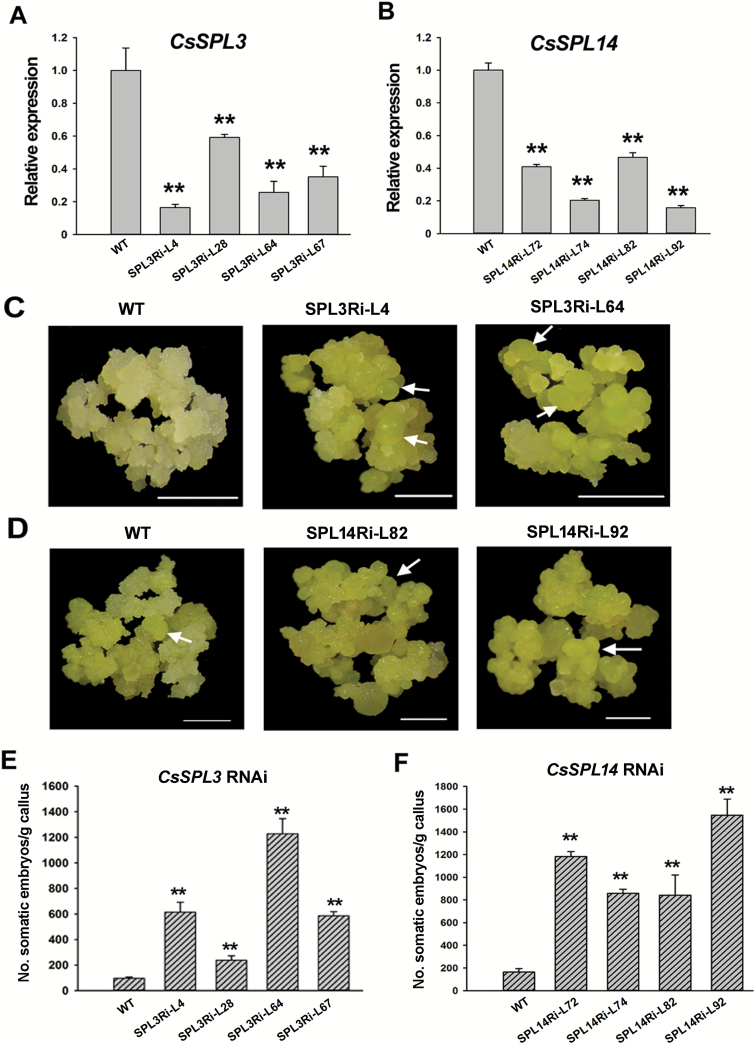Fig. 3.
RNAi suppression of CsSPL3 and CsSPL14 enhances somatic embryogenesis (SE) capability in citrus Fortunella hindsii. (A, B) Transcript abundance of CsSPL3 (A) and CsSPL14 (B) in wild-type (WT) and transgenic callus lines. SPL3Ri-L4, SPL3Ri-L28, SPL3Ri-L64, and SPL3Ri-L67 are CsSPL3 RNAi callus lines, while SPL14Ri-L72, SPL14Ri-L74, SPL14Ri-L82, and SPL14Ri-L92 are CsSPL14 RNAi callus lines. CsUBL5 was use as the endogenous reference gene. (C, D) SE of the WT compared with the CsSPL3 (C) and the CsSPL14 (D) RNAi lines at 80 d after induction (DAI), when the somatic embryos formed in the RNAi lines. Arrows indicate somatic embryos. Scale bars = 1mm. (E, F) Evaluation of SE capability in the WT and RNAi lines CsSPL3 (E) and CsSPL14 (F) at 100 DAI. Error bars represent standard deviation of three biological replicates. SE capability was measured as the number of somatic embryos formed per gram of fresh callus. Statistically significant differences compared with the WT were determined by t-tests (**P<0.01).

